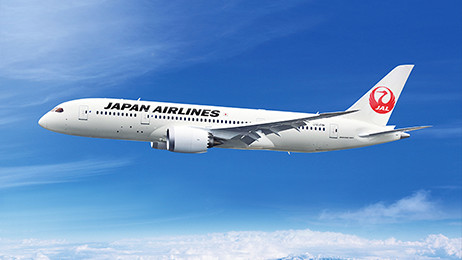History of Aircraft 2011s
-
History of Company
-
History of Aircraft
-
History of Uniforms
April-
 787-8
787-8
Introduce on April 22, 2012.More details
Offers an advanced inflight service environment, such as LED lighting and electronic window shades. Low-noise aircraft with roughly 10% higher operational efficiency than previous aircraft.
July-
 787-9
787-9
Introduced in July 1, 2015.More details
Offers an advanced inflight service environment, such as LED lighting and electronic window shades.
Low-noise aircraft with roughly 10% higher operational efficiency than previous aircrafft.
January-
 DHC-8-400CC (Cargo Combi)
DHC-8-400CC (Cargo Combi)
Introduced in January 2016.More details
DHC-8-400CC (Cargo Combi), which has a cargo compartment in the aft fuselage, is a next-generation turboprop airliner which rivals jet aircraft in terms of both speed and comfort.
April-
 EMBRAER190
EMBRAER190
Introduced in April 2016.More details
Manufactured by Brazilian aircraft manufacturer Embraer, which has the second largest shares after the Boeing in the US and Airbus in Europe.
Features a double-bubble type fuselage. Excels in seat width, aisle width, ceiling height and legroom due to the difference in inner diameter of the fuselage.
April-
 ATR42-6000
ATR42-6000
launched from April 25, 2017( Kagoshima-Yakushima)More details
The ATR42-600 and ATR42-600 aircraft are cutting-edge turboprops offering greater comfort for our passengers and high environmental performance such as low fuel consumption and low noise levels. The cockpit is installed with the latest navigational instruments in a state-of-the-art glass cockpit, which adopts the technology of the Airbus A380. Baggage stowage space in the cabin is larger than that of turboprops of the same class.
The first and second ATR42-600s delivered to JAC have a special livery, designed collaboratively by Tara Design College in Kagoshima and JAC.
December-
 ATR72-600
ATR72-600
launched from December 1, 2018(Kagoshima-Okinoerabu Island)More details
The ATR42-600 and ATR72-600 aircraft are cutting-edge turboprops offering greater comfort for our passengers and high environmental performance such as low fuel consumption and low noise levels. The cockpit is installed with the latest navigational instruments in a state-of-the-art glass cockpit, which adopts the technology of the Airbus A380. Baggage stowage space in the cabin is larger than that of turboprops of the same class.
This marked the arrival of the ATR72-600 in Japan for the first time.
Related links
-
History of Company
-
History of Aircraft
-
History of Uniforms

